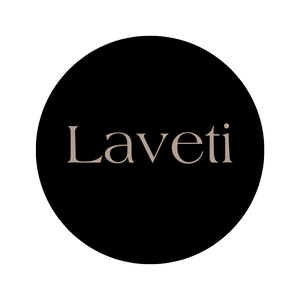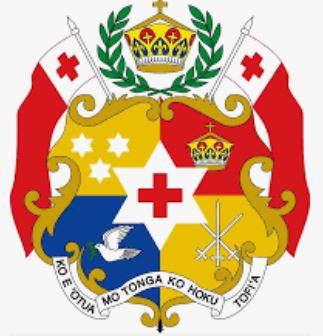Tonga Language Week 5th to 11th September
RELATIONSHIP BETWEEN FIJI AND TONGA
Bula Vinaka Vitia, Malo e Lelei Tonga!
In this special week commemorating 2021 Tongan Language Week, “Laveti” is pleased to feature how Tonga and Viti as neighbours share a very long history. These will be featured in short stories throughout the week from the 5th of September to 10th of September, ending with a LIVE story-telling session on the 11th of September.
Talanoa Dua (Story 1) – O Burotukula
Hundreds and hundreds of years ago before the ‘kai valagi’ had discovered the Pacific, there was an old civilization in Fiji called Burotu. Its chief was called the Tui Burotu or Tui Vanuakula. Burotu was also known as the land of the Kula birds and was famously known as Burotukula. The red Kula bird feathers in those days was found nowhere else in the Pacific except in Fiji – especially on the islands of Taveuni, Lakeba, Matuku and Kadavu. These red feathers were highly prized in Samoa. Tongan traders would sail to Matuku Island (close to which was the island known as Burotu) to trade red feathers with whale bones and whale teeth. They would then trade the red feathers in Samoa for the highly prized Samoan ‘ie toga’ mat.
Eventually a war broke out between the people of Burotu and nearby Kadavu Island resulting in the defeat of the powerful Tui Burotu and the exile of the Burotu warriors and chiefs. It is said that these conquering chiefs became chiefs throughout the Pacific including the ancient Tu’i Tonga. In fact, there is an old custom that says, when the old kings of Tonga died, they were made to face east so their spirits can travel back to the sala ki Burotu (hala ki Pulotu) - to the land of their forefathers, the land of their origin.
Burotu island eventually sunk beneath the waves but its fame grew over time and is told in many Polynesian legends as the Pulotu - world of the dead – also known as the Fenuakura in Tahiti, and Benuakura in Kiribati (from Tui Vanuakula). The word for the colour red in the Tongan language KULA, is given by the red kula birds from Burotu.
Talanoa Rua (Story 2) – O Tabu kei Sinaitakala
A very old legend from the village of Waciwaci on the island of Lakeba in the Lau group tells about a Tu’i Tonga Fefine called Sinaitakala Langileka. This princess was from the ancient Tu’i Tonga line. She visited Lakeba and fell in love with a man known as Tabu from the village of Waciwaci. The love between these two created a connection that is still known today in Tonga as the ‘Ha’a Falefisi’. More on this will be retold at the end of the week with our LIVE story-telling session.
Stay tuned and join us on Saturday September 11th at 5.00pm
Talanoa Tolu (Story 3) – Na Kai Matapule
The Matapule clan from Tonga is said to have been sailors and fishermen who drifted from Tonga and arrived into Fiji. It is unknown where exactly from Tonga they came from. These Matapule clans were adopted by two important chiefdoms in Fiji – one on Nairai Island in the Lomaiviti Group and the other on Taveuni Island.
The Matapule in Nairai established the village called Waitoga and were adopted by the Tui Nairai who was also known as the Kubunai-i-Wai, a senior line of the Vunivalu Warlord from Bau Island.
The second branch was adopted into the Cakaudrove clan headed by the Tui Cakau in Somosomo, Taveuni. They live in Somosomo and Qeleni villages today in Taveuni. Their role was to be in charge of the sacred turtles kept for the powerful Tui Cakau.
Talanoa Va (Story 4) – O Maile Latamai
Close to the 1800’s a Tongan by the name of Maile Latamai arrived in Fiji. It is believed he may have been a chief because he was accompanied by his servants. Maile finally settled on the western side of mainland Viti Levu in today’s Nadroga province and established his hill fort known as Tavuni.
From Maile Latamai’s marriage to a local woman, a large clan known as the No-i-Toga (people of Tonga) came forth. The descendants of Maile Latamai and the No-i-Tonga today live around the villages of Malevu, Naroro, Nawamagi, Korotogo and more villages around Nadroga.
Talanoa Lima (Story 5) – Na Lemaki kei na Jafau
It is said that the Lemaki and Jafau craftsmen in the Lau province today were brought into Fiji by Tui Tonga.
There was a canoe race in Samoa attended by the Tui Tonga and the canoes built by the two master craftsmen from Manono Island in Samoa won the race. Tui Tonga requested the two known as Lemaki and Lehā to accompany him back to Tonga. Once in Tonga, through visits and kinships in Lakeba, the tanoa and craftsmen from Manono in Samoa were brought into Fiji. They became the canoe and house builders for the Tui Nayau of Lakeba.
The descendants of these craftsmen still live today in Lakeba, Vulaga and Kabara Islands in the Lau Group.
Talanoa Ono (Story 6) – Enele Ma’afuotuitonga
In the mid-1800s, a Tongan warrior arrived into the village of Tubou in Lakeba. Tubou and a few other islands in the Lau group had a growing population of kai Tonga living under the protection of the Tui Nayau Roko Taliai Tupou. Enele Ma’afu, through the influence of Tui Tonga George Tupou proclaimed the lotu or Christianity in Lakeba and eventually throughout Fiji. Ma’afu settled on Vanuabalavu Island and established his village called Sawana, creating and becoming the first title holder of the Tui Lau. He also created his Tovata confederation consisting of the Lau, Cakaudrove, Bua and Macuata provinces.
Christianity in Fiji arrived in 1835 through missionaries William Cross and David Cargill who came through the Tui Tonga to the Tui Nayau in Tubou, Lakeba. In fact, the word LOTU for worship and church today in Fiji is a Tongan word. The old word Fijian word is SOKALOU.
Source: Simione Sevudredre


